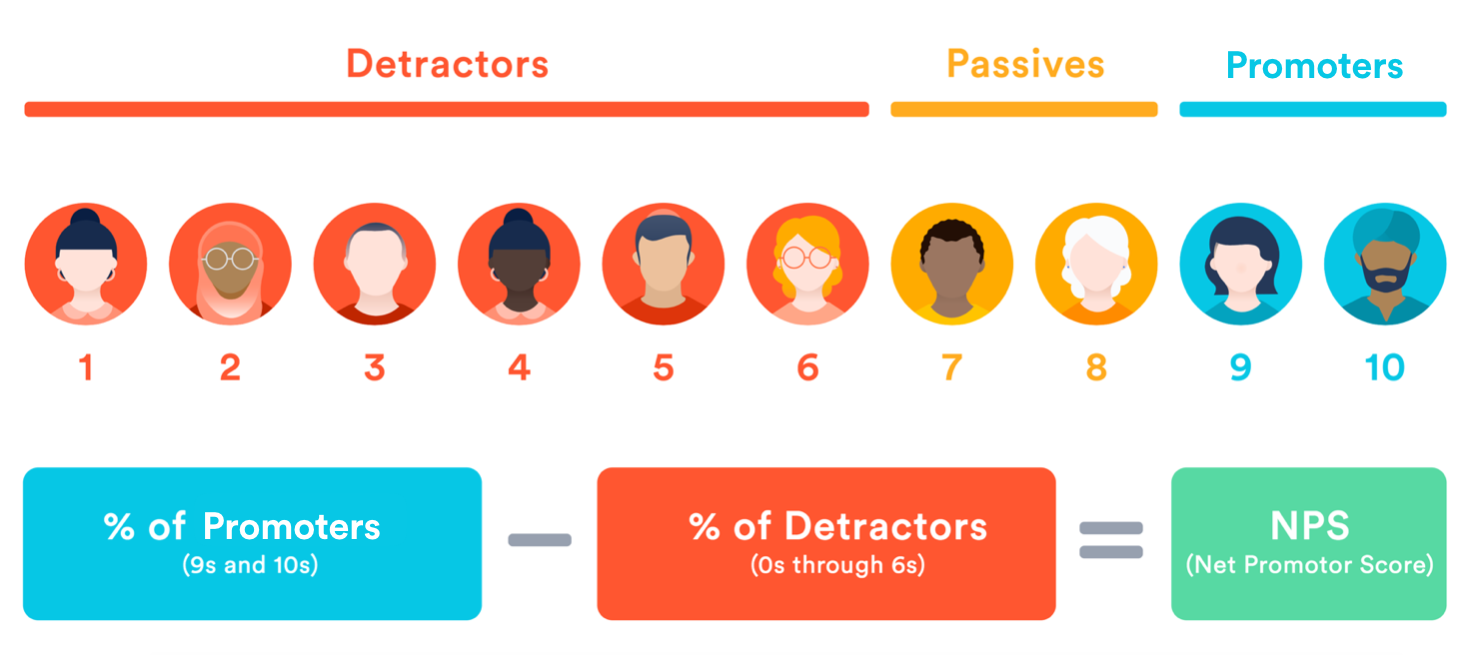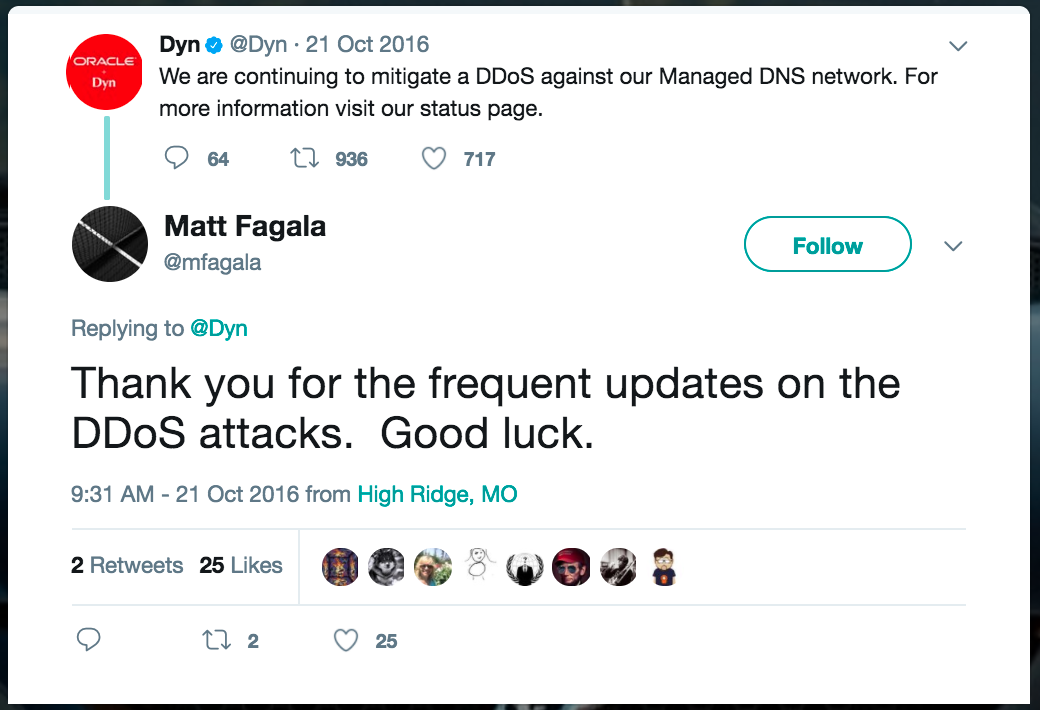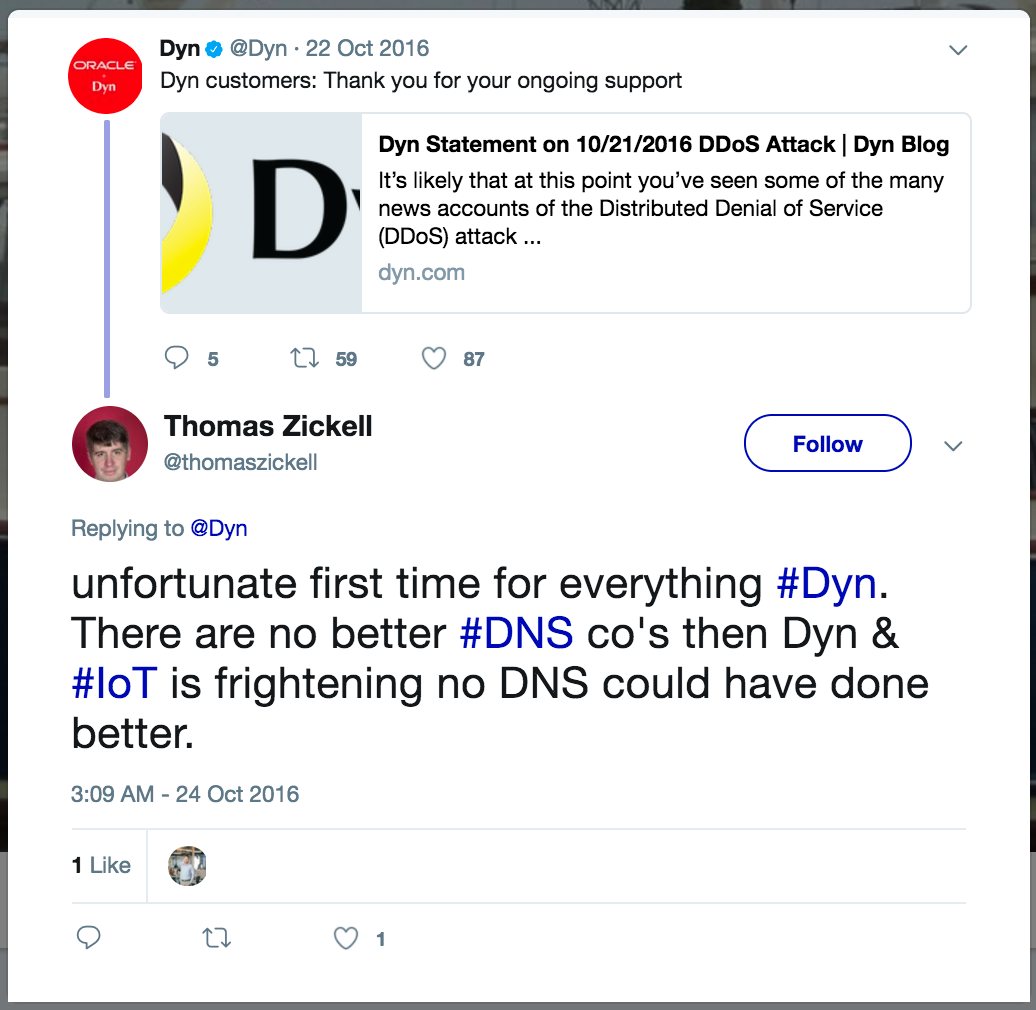Every time a consumer chooses your product or service, they expect your company to deliver as promised.
Yet, according to the 2017 Edelman Trust Barometer, we’ve entered an era of “trust in crisis.” Only 52% of people around the world trust companies in any real way.
Maybe it’s time to go back to (corporate) basics. Inspired by company retreats and team building exercises, a trust fall might be just what you need to build a better relationship with your customer.
In the SaaS and cloud service landscape, transparency around things like product and feature development, uptime, data privacy, and incident resolution is especially important for building a relationship of trust. Customers who rely on these tools hope that the company will stay honest and open even when things go wrong—essentially, catch them in the trust fall—but unfortunately, that’s not always the case.
 Source: MovieClips.com
Source: MovieClips.com
You can’t physically catch every backwards-falling customer to prove your dependability, but there are some serious benefits you can expect from embracing corporate transparency: happier customers, a more prosperous brand/product, and thriving employees, to name a few.
Read on for some key steps—many of which we’ve tested first-hand at Atlassian—to increase transparency and bridge the trust gap, along with some tools to help get you started.
Treat Customers As Insiders
Customers who have a solid understanding of your mission and company direction are more likely to want to use your products and stick around for the long haul. The research team at Receptive, creators of product demand intelligence software, found that being open about past, current, and future plans keeps customers and internal teams aligned and engaged with the product’s future.
One strategy is to create a public roadmap where users can come to see what’s up next (and what’s not). Social media management company AgoraPulse found providing a transparent product roadmap did wonders for maintaining customers.
“Not having any idea of where a company is heading forces customers out the door, while transparency keeps the right customers in. If a customer is considering leaving, but you have some important features on your roadmap, that may change their mind.” – CEO Emeric Ernoult.
A Trello board can be a great medium for a public roadmap as it’s both easy to create and simple for customers to visually digest. Trello walks the walk with a public roadmap of their own.
Other companies like Front, Twitter, Buffer, Monzo, and Slack do the same:
 Twitter Public Roadmap
Twitter Public Roadmap
And customers genuinely appreciate it:

 Buffer Roadmap Customer Comments
Buffer Roadmap Customer Comments
No matter what tool you decide to use, the key is having a place where customers can come for self-serve information to stay in-the-know on upcoming features.
Build Up Credibility In Down Times
When a customer signs up for a cloud service, they trust that the service is credible and will remain reliable. That trust is not always official, but make no mistake: there is an inherent contract negotiated between customer and service provider that when things go wrong, the two parties will collaborate to make sure things are resolved quickly and everyone is kept in the loop from investigation to resolution.
Being upfront with downtime and uptime figures (and having a communication channel in place where you can alert the masses when things go wrong) is key to maintaining happy customers.
In a cloud-centric world, some level of downtime is inescapable. It is more important than ever to be upfront and honest when things go wrong.
Take Dyn or AWS for example, who both experienced huge outages over the past year and had to act fast to resolve the issues while keeping millions of customers and end-users informed. Days like this are where a service like StatusPage comes in: It provides one place to keep teams and users in the loop during downtime.
During their October 2016 DDoS attack, Dyn did a killer job of communicating clearly and regularly through their status page, even in crisis mode. News outlets like the New York Times were even able to link to Dyn’s status page and quote their status updates during the incident. And it paid off:
During the major AWS S3 outage in February 2017, hundreds of popular web services experienced crippling outages. AWS uses a homegrown tool to report on status, but many AWS customers (like Buzzfeed) whose service status relies heavily on the status of AWS, were able to give their users a heads up that something wasn’t right even even before Amazon posted an update.

Buzzfeed’s Status Page updates during AWS S3 outage
We often think of transparency in relation to being honest when bad stuff happens (like the above outages), but it is equally important to show off good performance. After all, nothing instills confidence like proof of success.
For this, companies like CircleCI, Wistia, Gusto, Reddit, and Squarespace use StatusPage’s Uptime Showcase: a feature that allows you to show the historic health of your system with a visual, easy-to-understand uptime display.
 Reddit’s Status Page
Reddit’s Status Page
Bear, SRE Manager at CircleCI describes how Uptime Showcase helps maintain a culture of transparency:
“One of our driving principles at CircleCI is being open and transparent with our customers. StatusPage is a critical part of our customer communication. We were always interested in sharing uptime publicly, but didn’t have an easy way to do so before. Now we have one source of truth on uptime for both our customers and our internal team.”
Put Customer Feedback At The Core
Every customer should have a straightforward way to engage with real humans at your company to provide feedback and feature requests. (Who knows? This input may end up shaping your roadmap!)

Treating customers as collaborative partners not only gives you awesome ideas from the people who know your users’ needs best, but it also keeps them around longer since they have a personal connection with your company and a stake in the future of your products.
The only caveat to collaboration is making sure there is a process in place to close the feedback loop with candid answers.
Take this tweet exchange (left) with Southwest Airlines as an example—feedback channels with open, human-centric communication can go a long way towards empowering users and generating brand loyalty. In fact, 62% of Millennials say they are more likely to become and remain loyal customers if a brand engages with them according to Forbes.
Customer feedback tools to get you started:
- UserVoice can help you capture and analyze user feedback to prioritize your roadmap and make strategic product decisions
- Be social and use Twitter and Facebook for dedicated customer support channels to engage with customer feedback
- SurveyMonkey or Typeform can help you create and publish online surveys in minutes and view results in real-time
- Turn on the Voting Power-Up and allow comments on your public Trello roadmap to transform it into a feedback tool
- NPS can be used to gauge the loyalty of your customer relationships, which we’ll dive into next.
It’s also what you do with the feedback—how you spread it across the organization and turn it into action—that really makes customers feel like you’re behind them and their needs. While it’s not realistic to do something with every piece of feedback, there should be a system in place to respond to feedback and take action when it makes sense for you and your customers.
One way to put customer feedback into product decisions is by leveraging NPS, or Net Promoter Score, a loyalty metric that quantifies how customers feel about your product by asking:
On a scale of 1–10, how likely are you to recommend this product?
Anyone who rates their recommendation as a 9 or 10 is deemed a “promoter.” Your overall NPS score is determined by some straight-forward arithmetic. Subtract the number of detractors from the number of promoters and divide by the total number of respondents.

It might seem too easy to have one question that delivers rapid, consistent, and measurable results. The real magic comes from what you do with those scores.
You may find it helpful to create a regular “voice of the customer” report. The idea around this report is to aggregate all of the customer satisfaction and loyalty metrics you collect (like NPS ) so teams across the company can keep a pulse on customer sentiment and use the findings in their work.
At Atlassian, we send out weekly NPS summary reports to keep customer insights top of mind for our employees. We also use NPS data and comments to prioritize product roadmap decisions.
Collecting NPS can be as simple as placing a survey link in an e-mail or newsletter to your user base. Even better, send NPS surveys out to subsections of your userbase at regular intervals throughout the year, rather than sending in one blast once a year.
Consistency enables you to capture more stable sentiment and control for certain times of the year that sentiment may be up or down from things like a new product launch, a service outage, etc.
Responding takes more effort than collecting, but it’s worth sending a human, non-templatized follow up message to each customer. A simple response of thanks that addresses concerns and gives them a sneak peak into upcoming company plans and features will do the trick. You will not only solidify promoters’ loyalty, but you will also build credibility with detractors (and hopefully pave the way to future promoter status).
Authenticity Matters

While tools and tips are awesome, none of these things matter without authenticity. Your whole organization needs to be on board with living and breathing transparent values if you want to make a real impact.
Paul Adams, VP of Product for Intercom, shared his perspective on the importance of authenticity in a quote that really resonates: “If you aren’t comfortable putting your heart on a plate, then don’t do it…you can’t fake transparency. It has to come from an honest place and you have to believe in what you’re sharing.”
We hope these tips help you catch your customers the next time a metaphorical trust fall comes your way. The benefits are huge, and the path is ready for you to pave.
We’d love to know how these tips worked for you and hear how else you are driving transparency at your organization. Leave a note below in the comments!
Next: A Time For Transparency: Twitter’s Journey To A Public Roadmap


